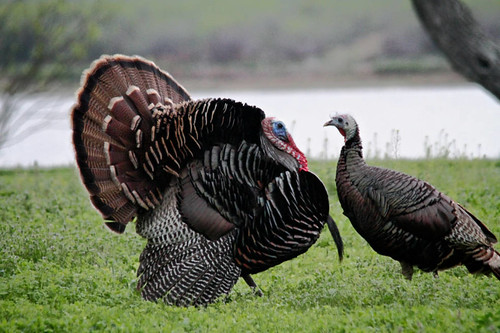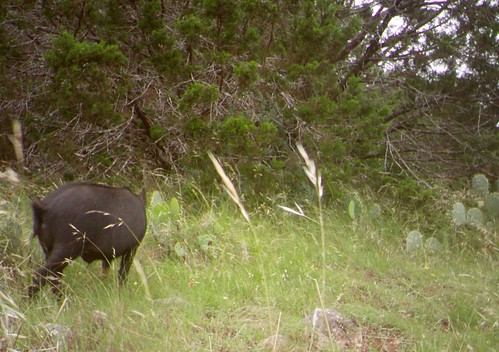
Spring brings new life to the fields and forests and wild turkeys are one of the most interesting spectacles this time of year. Male turkeys gobble and strut to attract the attention of hen turkeys. Hens, in turn, go off and lay their eggs- one egg each day until the clutch is complete and the hens then begin incubation.
Unfortunately, this spring more than ever, wild turkeys across the U.S. are facing an increasing threat from a new and rapidly expanding population of nest predators…feral swine. Feral swine, also known as wild pigs, feral hogs, and wild boars, are not native to North America and are the descendants of domestic swine which either escaped or were liberated. In some cases, feral swine are intentionally released to create new hunting opportunities. But these opportunities come at the expense of other wildlife, including ground nesting birds such as the wild turkey. Feral swine are highly adaptable and can learn to seek out turkey nests even before the hen starts incubation, consuming the eggs when left unprotected. When a partially completed clutch is depredated, the hen is forced to start over, depleting vital reserves within herself as well as risking lower nest success and chick survival.
The USDA-APHIS-Wildlife Services’ program in Texas recently completed a project to estimate the extent of feral swine depredation on turkey nests. Researchers established artificial nests the way a turkey would- one egg per day at each nest site for 12 days. Twenty-two nests were monitored for the 12 days it took to establish a full clutch and for three days following the placement of the last egg. Trail cameras were used to determine the fate of the eggs as well as which predators visited the site.

Of the 22 nests, only two survived the entire 15-day monitoring period. Many nests were depredated on multiple occasions, showing that the predators were seeking out the eggs. Feral swine were responsible for 25 percent of depredation events. Other predators included ravens, raccoons, and grey fox. Feral swine nest predation appears to add to native predators’ impact and the combined 90% depredation rate in this study indicates how difficult it is for turkeys to raise a brood. Additional studies will be conducted by Wildlife Services’ National Wildlife Research Center in conjunction with Texas A&M University-Kingsville.
Depredation on wild turkey nests is just one of the many types of damage caused by invasive feral swine. Wildlife Services is working across the country to estimate, control and prevent feral swine damage.
Congress has appropriated $20 million a year to support USDA-APHIS-Wildlife Services National Feral Swine Damage Management Program. The overarching goal of the program is to protect agriculture, natural resources, property, animal health, and human health and safety by managing damage caused by feral swine in the United States and its territories. To accomplish this goal, APHIS is working in cooperation with states, tribes, other federal and international agencies, universities, the public, and other stakeholders. Visit our website for more information.



